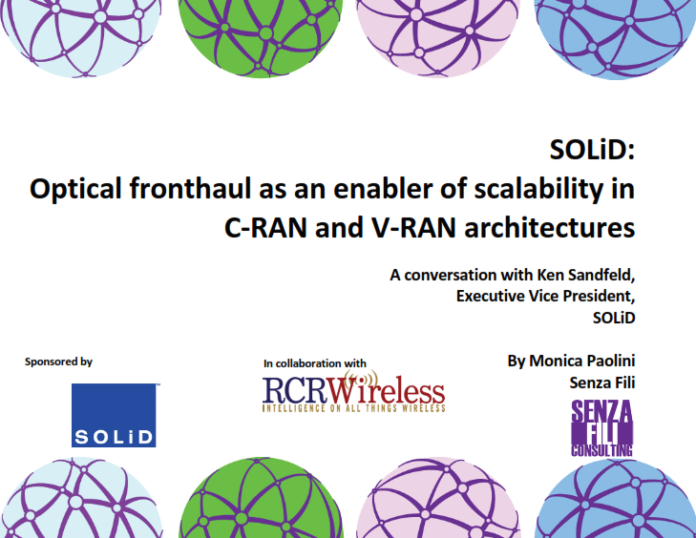A conversation with Ken Sandfeld, EVP, SOLiD
Solid wants to ensure that backhaul and fronthaul do not become the bottlenecks in densification efforts. Instead, the company is aiming to transform them into scalable enablers that help provide the capacity needed, where needed, through DWDM solutions, which splits a single fiber strand into multiple bidirectional channels to increase the capacity of fiber, multiplying the capacity of the link.
“With a C-RAN architecture, you’re trying to push the assets back into the core, which means you have to change the way you deploy the topology on the access side of the network,” said Ken Sandfeld, EVP of Solid. “This requires a different combination of network solutions, with the use of CWDM and DWDM. We have the capability of combining GPON, Ethernet and CPRI, all in the same fibers, thereby increasing the flexibility of the architecture. We’ve been working through all of the C-RAN possibilities in the Asia markets, learning with the carriers what’s working, what’s not, [and] modifying our products.
“We focused on the unique packaging of those solutions so they better fit the network operators’ requirements,” he said, “because the traditional solutions just were not packaged and were not set up for that type of density.”
Read the full interview or watch the video to find out more about Solid fronthaul solutions that support C-RAN and RAN virtualization.
This conversation will be included in the Senza Fili report “Charting the path to RAN virtualization: C-RAN, fronthaul and HetNets” that will be published in February 2015. If you would like to receive a complimentary copy of the report, please click here and you will be among the first to receive the report when it is finalized.

